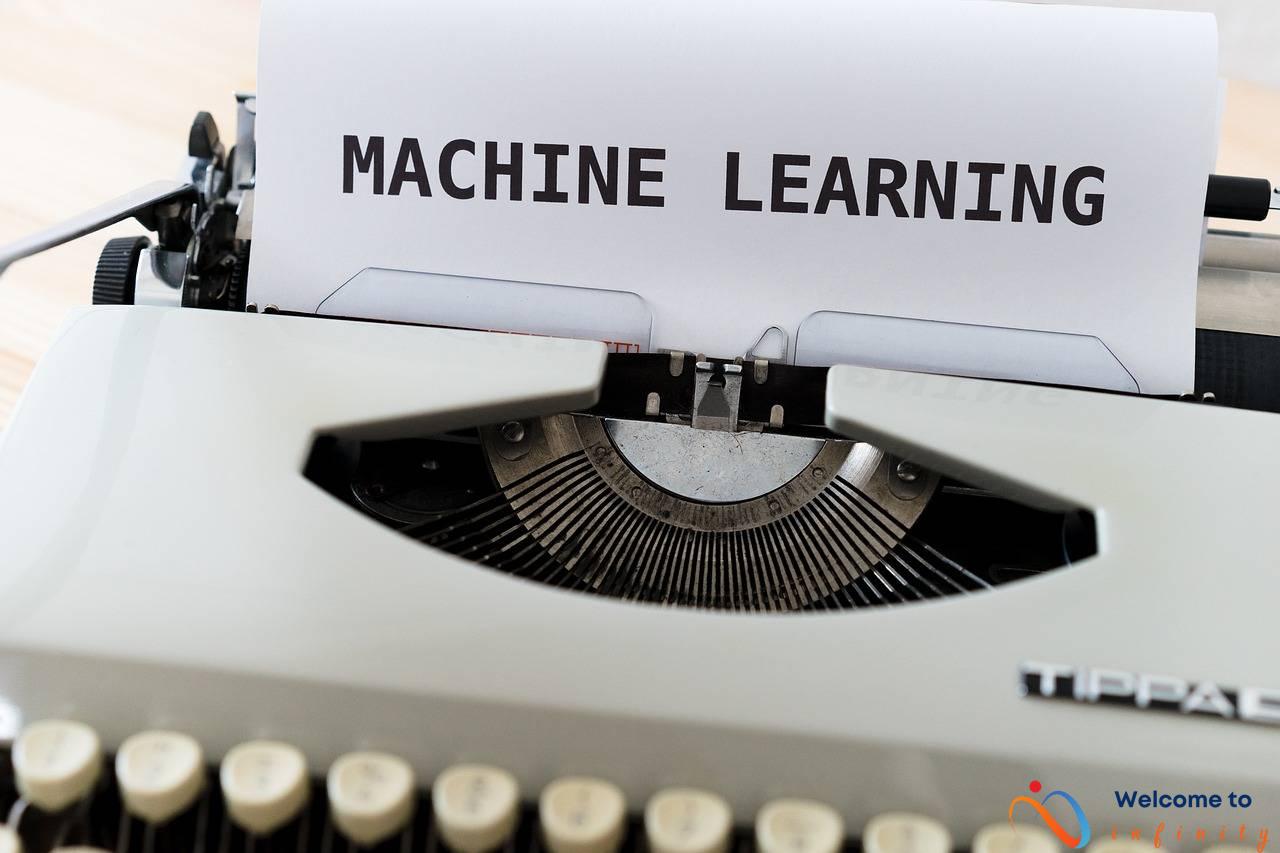Natural Language Processing (NLP) relies heavily on text data that is clean and formatted in a manner that allows for efficient analysis. That's why text preprocessing techniques are essential for NLP. There are several techniques that one can employ to clean and format text data.
The first and most important technique is tokenization. Tokenization involves dividing the text data into smaller units, which can be words, phrases, or even sentences. This technique facilitates text analysis since the computer can understand and analyze specific units of text.
The next technique is stopwords removal. This technique involves removing common words such as the, is, and and, which are irrelevant to text analysis. By eliminating these words, the dataset size is reduced, and computational efficiency is improved.
Lemmatization is another technique used for preprocessing text data. The primary goal of lemmatization is to normalize text data, which involves converting different forms of the same word to a common base form. For example, ran, running, and runs can be converted to run.
Stemming is another technique used for text preprocessing, which involves reducing words to their root form by removing suffixes. While stemming can create some incorrect forms, it is still a useful technique for reducing the number of unique words in a dataset.
Normalization is another technique that involves transforming text data to a standard form that reduces noise while enabling the use of consistent vocabulary across the dataset. This can be done through case folding, which converts all text to lower or uppercase form, or by removing noise using techniques like spell checking and correcting, dealing with abbreviations, and removing repeated characters.
POS tagging is a technique used to identify the part of speech of each word in a sentence, enabling text analysis based on different parts of speech. Chunking is another technique that uses POS tagging to group words into smaller, easy-to-process structures.
The final technique is transformation, which involves converting text data into an appropriate format for analysis. Feature extraction is often used to represent text data in a numerical format. Techniques like Bag of Words (BoW) and Term Frequency-Inverse Document Frequency (TF-IDF) are commonly used for this purpose.
These techniques are significant for cleaning and formatting text data for NLP. By implementing them, you can increase the accuracy and effectiveness of your analysis while reducing computation time and resources.
Tokenization is the process of dividing a text into smaller units such as words, phrases, or sentences. This technique is used to facilitate the analysis of text data. It is important to identify the appropriate level of granularity when tokenizing. For example, if we tokenize a paragraph into sentences, we may lose important contextual information about the words within that paragraph. On the other hand, if we tokenize at the word level, we risk creating too many tokens and losing the meaning of the sentence as a whole.
There are several types of tokenizers available, such as word tokenizer, sentence tokenizer, and regular expression tokenizer, among others. These tokenizers use different approaches to determine the appropriate boundaries between tokens.
Tokenization is a fundamental technique in NLP and is generally the first step in text data cleaning and formatting. It enables the creation of a structured representation of text data that is suitable for further analysis.
Tokenization
Tokenization
Tokenization is an essential technique that breaks down any text data into smaller elements, such as words, phrases, or sentences. Tokenization enables the efficient processing and analysis of text data by dividing it into more manageable components.
There are different types of tokenization available, but the most common is word tokenization. Word tokenization breaks down text data into individual words and punctuation marks. Punctuation marks are considered as separate tokens because they add meaning to the text data. For instance, a period may indicate the end of a sentence, and a comma may signal a pause in the text.
Some tokenizers can also break text data into phrases or sentences. For example, a sentence tokenizer divides text data into complete sentences, which is particularly useful for applications such as sentiment analysis, where the meaning of each sentence is important.
Tokenization is a crucial step in Natural Language Processing (NLP) because it creates the foundation for analyzing and processing text data. A tokenizer takes raw text data as input and returns a list of tokens ready for analysis.
Stopwords Removal
“the”, “is”, or “and”. Removing stopwords helps to decrease the dataset size and improve computational efficiency. There are standard lists of stopwords that are available which can be used directly. However, sometimes it may be necessary to create custom stopwords lists depending on the specific requirements of the analysis.
While removing stopwords, one must be careful not to remove important words that might be considered stopwords but have contextual significance. For example, the word “not” might be considered a stopword, but in the sentence “I do not like pizza,” removing “not” completely changes the meaning of the sentence. Therefore, it is essential to carefully consider which words to remove and which ones to keep.
Stopword removal can be done using various NLP libraries in Python, such as NLTK and spaCy. These libraries have built-in functions to remove stopwords that are effective and accurate. After removing stopwords, it is useful to perform further text preprocessing techniques, such as stemming, to further clean and normalize the data.
Overall, stopword removal is a critical step in text preprocessing for NLP to improve the quality of the dataset for analysis. It is essential to use carefully curated stopwords lists and tools that can accurately identify and remove irrelevant words.
the
The Importance of Removing “the” From Text Data in NLP:
When working on Natural Language Processing (NLP) projects, removing irrelevant and frequently used words such as “the” is essential for improving the accuracy of the analysis. The word “the” does not provide any valuable information and can add noise to the text data.
Several techniques can be used to remove “the” from text data for better analysis, including stopword removal and lemmatization. Stopword removal involves removing commonly used words like “the,” “is,” and “and” from text data, reducing the dataset's size and improving computational efficiency.
Lemmatization, on the other hand, involves converting words to their base form, reducing different forms of the same word to a common base. This can replace “the” with a root word and help to identify meaningful terms.
Removing “the” can also prevent confusions when it comes to part-of-speech tagging. “The” can be identified as a determiner in a sentence, but removal of such frequently used words can serve as an essential step in reducing noise in text data for NLP.
In conclusion, removing “the” from text data is a crucial step in NLP projects. Implementing techniques like stopword removal and lemmatization can help to reduce noise and improve the accuracy of text analysis. By removing “the,” researchers can also prevent confusions in part-of-speech tagging and simplify text data for NLP processing.
,
When using natural language processing (NLP), text data needs to be cleaned and appropriately formatted for analysis. The process involves several techniques that are used to standardize the data and remove noise, making it more accurate and efficient for analysis. Here are some common text preprocessing techniques used in NLP:
Tokenization is the process of dividing text data into smaller units such as words, phrases, or sentences. It enables easy processing of text data as it breaks the complex data into manageable smaller units. Tokenization is a critical early stage in NLP techniques.
Stopwords refer to common words in a text that are not helpful in analysis since they are frequently used such as “the,” “is,” and “and.” Removing these irrelevant words helps reduce dataset size, and computational efficiency improving the accuracy of the processing.
Lemmatization is a technique used to convert words to their base form, reducing redundant text variations of the same word to a standard format for analysis. For example, converting “ran,” “running,” and “runs” to “run.” This technique enables the analysis of words in their root form, rather than multiple variations that can complicate processing, creating more advanced analysis.
Stemming is a technique used to reduce words to their root form by removing suffixes, but this can create some incorrect word forms compared to their base meaning.
Normalization is the process of transforming text data into a standard format, enabling the use of consistent vocabulary throughout the dataset and reducing noise.
Case folding is a normalization technique used to convert all text to either lowercase or uppercase letters to reduce the number of unique words in the dataset.
Noise in text data can be removed using various techniques like spell checking, handling abbreviations, and eliminating repeated characters that can be distracting for text processing algorithms.
POS tagging is a technique used for identifying each word's grammatical role in a sentence. This technique is essential in understanding the sequence of words that impact the meaning of a sentence.
Chunking groups words into “chunks” based on their POS tags, creating easy-to-process structures to find information about specific aspects of the text.
Transformation techniques involve converting text data to an appropriate format that can be used for analysis.
Feature extraction is the process of representing text data in numerical format. Common techniques include the Bag of Words (BoW), a basic technique that counts word occurrences in the dataset, and the Term Frequency-Inverse Document Frequency (TF-IDF), which is a more intelligent method that considers the importance of a word in a document and the relevance of the word to the entire document set.
is
What is Text Preprocessing?
Text Preprocessing is the process of transforming the unstructured raw data into a structured format that can be easily analyzed using Natural Language Processing (NLP). Text Preprocessing involves a series of techniques to standardize and clean the data to improve computational efficiency and accuracy. These techniques include tokenization, removing stopwords, lemmatization, stemming, normalization, Part-of-speech (POS) tagging, and feature extraction among others. Let's explore some of these techniques in more detail!
Tokenization:
Tokenization is the process of dividing the text data into smaller units such as words, phrases, or sentences. These smaller units are known as tokens and facilitate text analysis. Tokenization can be performed using various techniques such as whitespace tokenization, regular expression-based tokenization, and rule-based tokenization.
Stopwords Removal:
Stopwords are the most commonly used words in a language that don't provide much information about the context of the text data. These words include “the”, “is”, “and”, etc. Removing these stopwords reduces the size of the dataset and improves computational efficiency.
Lemmatization:
Lemmatization involves converting words to their base form to reduce different forms of the same word to a common base. For example, “ran”, “running”, and “runs” can all be reduced to “run”.
Stemming:
Stemming is the process of reducing words to their root form by removing suffixes. This technique is similar to lemmatization but can sometimes create incorrect word forms.
Normalization:
Normalization involves transforming text data to a standard form, enabling the use of consistent vocabulary across the dataset and reducing noise. Techniques used for normalization may include case folding, spell-checking, handling abbreviations, and removing repeated characters.
Part-of-speech (POS) Tagging:
POS Tagging is used to identify the part of speech of each word in a sentence. It helps in understanding the grammatical structure of the text data. Chunking is used in tandem with POS tagging, which groups together words based on their POS tags.
Feature Extraction:
In Feature Extraction, text data is transformed into numeric representation. Methods such as Bag of Words (BoW) and Term Frequency-Inverse Document Frequency (TF-IDF) are used to extract features from text data. This enables the use of algorithms that only take numerical data as input., or
Natural Language Processing (NLP) deals with human language data, and text is the most common format of human language. The unstructured nature of text is one of the biggest challenges of NLP. For successful text analysis, the data must be cleaned, formatted, and preprocessed. In this article, we will explore various techniques used in text preprocessing for NLP.
In tokenization, the text is divided into smaller units such as words, phrases, or sentences. Tokenization helps in breaking the text into more manageable and understandable chunks of data. It facilitates the analysis of text data by making precise and targeted modifications, and is an essential pre-processing step in NLP.
Stopwords are commonly used words such as the, is, or and, which do not add any significant meaning to the text. Removing stopwords can reduce the size of the dataset and improve computational efficiency. The list of stopwords varies depending on the language and the task, and it is important to select a relevant list of stopwords for the analysis, to avoid removing relevant information.
Lemmatization involves converting words to their base form, also known as a lemma. It reduces different forms of the same word to a common base, making it easier to compare, group, and analyze. It helps in reducing the size of the vocabulary, as words with similar meanings but different forms are represented by a common lemma. For instance, ran, running, and runs will all be represented by the lemma run.
Stemming is the process of reducing words to their root form by removing suffixes. Stemming is a rule-based approach that is fast and easy to implement. However, stemming can create incorrect forms of words, and the meaning of the word may be lost in the process.
Normalization is the process of transforming text data to a standard form, improving the consistency of the vocabulary across the dataset. It eliminates inconsistencies such as different spellings of the same word, uppercase and lowercase variations, and special characters. Normalization is crucial in identifying relevant patterns and boosting the performance of NLP models.
POS tagging is used to identify the part of speech of each word in a sentence. This can help in identifying the role of the word in the sentence, and its relevance to the analysis. Chunking involves grouping words into chunks based on their POS tags, creating easy-to-process structures for analysis.
Transformation techniques convert the text data into an appropriate format that can be used for analysis. Feature extraction is a common transformation technique that represents text data in a numerical format. The Bag of Words (BoW) technique represents text data as a bag, where each word is treated as a separate feature. The Term Frequency-Inverse Document Frequency (TF-IDF) technique represents the importance of a word in a document based on its frequency in the document and its frequency across the entire corpus.
Text preprocessing is crucial in NLP, and the techniques outlined above are essential for analyzing text data efficiently. By cleaning and formatting text data, NLP models can extract valuable insights, facilitate decision-making, and revolutionize the way we interact with human language data.
and.
When using multiple text preprocessing techniques, it's helpful to combine them to get the best results. For example, after tokenization, stopwords removal can be applied to remove irrelevant words. Lemmatization or stemming can then be used to convert words to a common base form. Normalization techniques such as case folding and noise removal can be used to standardize and clean the data. Finally, feature extraction techniques such as BoW or TF-IDF can be used to transform the text data into numerical format for analysis. It's important to experiment with different combinations of these techniques to find the most effective approach for each specific application. Additionally, tracking the performance of each technique or combination of techniques can help in optimizing the text preprocessing pipeline.
Removing such words decreases the dataset size and improves computational efficiency.
Removing stopwords is a common technique used to preprocess text data before NLP analysis. Stopwords are words that are used frequently in a text but are not relevant to the analysis such as the, is, and and. These words can be removed from the text to decrease the dataset size, making the analysis easier and reducing computational time. However, it is important to note that removing too many stopwords can negatively impact the accuracy of the analysis, so it is important to choose the right balance between removing stopwords and preserving the important words in the text.
The process of removing stopwords can be done using several libraries and machine learning models. The NLTK library is a popular choice for performing stopword removal. It provides a list of common stopwords in various languages that can be used to remove stopwords from the text. Additionally, machine learning models can be trained to identify stopwords and remove them from the text automatically.
Stopword removal is an essential step in preprocessing text data for NLP analysis. It not only reduces the dataset size but also improves computational efficiency, making it an important factor for efficient analysis of large text datasets.
Lemmatization
“ran”, “running”, and “runs” to “run”. This technique is crucial in reducing the complexity of the text data and enhancing its clarity. Lemmatization uses different algorithms to map different forms of a word to its base form, such as WordNet Lemmatizer, Spacy Lemmatizer, and NLTK Lemmatizer. WordNet Lemmatizer is a popular algorithm that uses a precompiled database to map different forms of a word to its base form using part-of-speech tagging. Spacy Lemmatizer is another efficient algorithm that uses a statistical model to reduce words to their base form.
However, lemmatization may not always produce accurate results as it relies on part-of-speech tagging and similarity calculation. It can sometimes convert different words into the same base form, leading to semantic ambiguity. For example, “saw” can be the past tense of “see” or the tool used to cut wood. Therefore, it is essential to choose the appropriate lemmatization algorithm based on the type of text data and its language.
Overall, lemmatization is a powerful method of data preprocessing that can significantly enhance the accuracy of NLP models. It can help to reduce the size of the dataset and improve computational efficiency by simplifying the text data. Lemmatization, along with other preprocessing techniques like tokenization and stopwords removal, is a vital step in preparing text data for NLP analysis.
ran
Ran is the past tense of the verb ‘run' and is a common verb used in everyday language. In natural language processing, lemmatization is used to convert different forms of the same word, including ‘ran,' ‘running,' and ‘runs,' to their base form, ‘run.' This technique simplifies the data and ensures that accurate analysis can be conducted, as similar words will represent the same concept in the processed text.
The process of lemmatization is essential in NLP because it involves reducing the dataset size and improving computational efficiency. By reducing the number of unique words in the text data, processing time is reduced, making it easier to extract important information. This technique helps text analytics models become more accurate and effective by standardizing the vocabulary used in the dataset, ensuring that each word represents a unique idea.
- In conclusion, Ran is a common verb in English, and pre-processing techniques like lemmatization are used to convert its various forms to their base form so that it can be analyzed better.
,
Tokenization is a text preprocessing technique that divides a text into smaller units, such as words, phrases, or sentences, to enable easier text analysis. Tokenization can be performed using regex patterns, or using NLP libraries like NLTK or spaCy.
Tokenization can be useful for different applications in NLP. For example, in sentiment analysis, tokenization can divide a review into separate words, making it easy to perform word count analysis to determine the most positive or negative words in the review. Similarly, in text classification, tokenization can divide a document into sentences and then into words, enabling features to be extracted for each sentence or word.
There are different approaches to tokenization, depending on the objectives of the analysis. For example, in English, contractions like “don't” or “can't” can be tokenized differently, as two separate words or as a single word. Also, tokenization may also consider punctuation marks or emojis as tokens, depending on the objective of the analysis. Proper tokenization is crucial, as it can affect the subsequent data analysis and decision making.
running
Running is a popular form of exercise that has numerous benefits for both physical and mental health. It is a high-impact exercise that helps in building strong muscles, improving cardiovascular health, and boosting metabolism. Regular running can lead to weight loss and strengthen the immune system, reducing the risk of chronic diseases such as diabetes or heart disease.
To get started with running, it's important to choose the right gear, such as supportive running shoes and comfortable clothing. It's best to start with a low-intensity exercise program and gradually build up stamina and speed. Proper running form is also crucial to prevent injuries, such as knee pain or shin splints.
Running can be done either outdoors or on a treadmill. Outdoor running can allow for a change of scenery and fresh air, while treadmill running can provide a controlled environment and allow for customization of speed and incline. It's important to stay hydrated during running and also to fuel the body with the right nutrients for optimal performance.
, and
Natural Language Processing (NLP) has revolutionized the way we interact with machines and with each other. However, to make the most out of NLP, the text data needs to be preprocessed and cleaned. Here are some essential techniques used for cleaning and formatting text data.
Tokenization involves dividing the text into smaller units, such as words, phrases, or sentences. This technique facilitates text analysis by breaking it down into manageable components. For instance, tokenization can identify the frequency of particular words in a text and help identify which words to include or exclude in analysis.
Stopwords are common words that do not carry much significance in text, such as “the,” “is,” and “and.” Removing stopwords reduces the size of the dataset and improves computational efficiency. Usually, a predefined list of stopwords is removed from the text data before further analysis.
Lemmatization and stemming are used to reduce different forms of the same word. For instance, if a text contains the words “ran,” “running,” and “runs,” they can all be reduced to the base form “run” through lemmatization. Stemming involves reducing words to their root form by removing suffixes. However, this method can sometimes create incorrect word forms.
Normalization ensures that the text data is standardized, enabling consistent vocabulary across the dataset. It also reduces noise by handling case-foldings, spell-checking, and abbreviation handling, among others. Noise in text data can sometimes include misspellings, slang, or repeated characters, which can be corrected using normalization.
POS tagging is used to identify the part of speech of each word in a sentence. This method can help analyze the grammatical structure of the text, leading to more sophisticated analysis. Chunking groups words into “chunks” based on their POS tags, creating easy-to-process structures.
Transformation techniques are used to convert text data into an appropriate format for analysis. Feature extraction is a popular technique that represents text data in a numerical format, such as the Bag of Words (BoW) or Term Frequency-Inverse Document Frequency (TF-IDF), allowing for easier analysis.
In summary, using proper text preprocessing techniques can significantly improve the accuracy, relevance, and speed of NLP analysis. When undergoing text preprocessing, always keep in mind the needs of your analysis and choose the appropriate techniques accordingly.
runs
When dealing with text data in NLP, many words can have different forms like run, running, and runs, which can make analysis difficult. That's where the technique of lemmatization comes into play. It involves reducing different forms of the same word into a common base by converting them to their base form, thus allowing for more accurate analysis.
Lemmatization works by analyzing a word and determining its root form (known as the lemma) based on its use in the sentence. This can be done through the use of morphological analysis, part-of-speech tagging, or a combination of both. For example, the word runs would be converted to its base form of run.
On the other hand, there is also stemming, which is another technique used for reducing words to their base form through removing suffixes. However, stemming can sometimes create incorrect word forms, making lemmatization a more accurate option for NLP purposes.
to
Overall, text preprocessing is an essential step in NLP and requires a lot of careful consideration to ensure that the text data is in a clean and formatted state for analysis. By using techniques such as tokenization, stopwords removal, lemmatization, stemming, normalization, POS tagging, and feature extraction, data scientists can facilitate the analysis of text data by creating easy-to-process structures that can be transformed into an appropriate format for analysis. As you can see from this article, there are many techniques available to us, and by using them wisely, we can transform noisy and inconsistent text data into clean and well-formatted data that is ready for analysis.
run
As one of the most common verbs in the English language, run is a prime example of why text preprocessing is essential in Natural Language Processing (NLP).
Tokenization is particularly useful when analyzing text containing the word run. For example, simply dividing a sentence into individual words allows the identification of run as a verb, noun, or even an adjective (e.g. the runny nose). By tokenizing a text, you can more easily analyze all of the different types and meanings of run.
To further improve accuracy and granularity of NLP analysis, it's important to perform lemmatization on all run words. This can be a complex process due to the multiple forms of this verb, but the result leads to a significant improvement in the quality of the extracted information. For example, two different forms of the verb run, like “running” and “ran” will be transformed into their root form, “run”.
It's also essential to consider stemming when working with texts that have run words. Stemming can remove suffixes that would normally make the same verb appear as different types of verbs (e.g. I run vs She runs). However, stemming can lead to significant inaccuracies. Therefore, it's usually best to use lemmatization instead of stemming for NLP processes involving text data containing run.
- Tokenization helps identify run as a verb, noun, or adjective.
- Lemmatization ensures consistency in the use of different forms of run.
- Stemming may introduce inaccuracies, and lemmatization is preferable in NLP processes involving text data containing run.
The ability to properly preprocess text with tools such as tokenization, lemmatization, and stemming is essential in extracting meaningful insights from natural language data. In the case of run, the proper application of these techniques enables effective text analysis in a variety of contexts.
.
Natural Language Processing (NLP) requires the use of text data that has been cleaned and formatted for analysis. This is because text data can be messy and difficult to analyze. There are various techniques used for cleaning and formatting text data to make it suitable for NLP analysis. Below are some of the major techniques used:
- Tokenization: In this technique, the text is divided into smaller units such as words, phrases, or sentences to facilitate text analysis. This technique helps to break down the text into smaller units that can be easily analyzed and processed.
- Stopwords Removal: Stopwords are irrelevant words in a text that are commonly used such as the, is, or and. Removing such words decreases the dataset size and improves computational efficiency.
- Lemmatization: This involves converting words to their base form to reduce different forms of the same word to a common base, for example converting ran, running, and runs to run. This makes it easier to analyze the text as many forms of a word are reduced to a single base word.
- Stemming: Stemming is the process of reducing words to their root form by removing suffixes.
- Normalization: Normalization involves transforming text data to a standard form, enabling the use of consistent vocabulary across the dataset and reducing noise. This involves several techniques such as case folding, handling noise, and abbreviation expansion.
- Part-of-speech (POS) Tagging: POS tagging is used to identify the part of speech of each word in a sentence. This helps in analyzing the text by understanding the grammatical structure of the sentence.
- Chunking: Chunking groups words into chunks based on their POS tags, creating easy-to-process structures.
- Transformation: Transformation techniques involve converting text data into an appropriate format that can be used for analysis. Feature extraction is one of the transformational techniques used in NLP. Feature extraction is used to represent text data in a numerical format. Techniques like Bag of Words (BoW) and Term Frequency-Inverse Document Frequency (TF-IDF) are used for feature extraction.
These techniques are critical to successful NLP analysis. They help to ensure that the text data is cleaned and formatted for analysis and that the correct information is extracted from the data. When used correctly, these techniques will provide quality and accurate results that can be used for various NLP applications.
Stemming
Stemming is a text preprocessing technique that involves reducing words to their root form by removing suffixes. This technique has proved vital in Natural Language Processing (NLP) but can create some incorrect word forms.
Stemming is widely used in NLP as it helps to reduce the number of unique words in a dataset, and improve computational efficiency. The algorithm used for stemming just checks whether the word has a suffix, and if so, it removes it. However, multiple words can have the same stem even if they do not share the same root.
For example,
- Running
- Runner
- Runners
all share the same root of “run” but have different suffixes.
Despite its usefulness, the stemming technique has some shortcomings since it does not consider the part of speech of the word.
In conclusion, stemming is a valuable technique used in text preprocessing, which may not always produce the desired results since it does not consider the context around the words. As a result, it's used with additional techniques such as lemmatization to enhance its efficiency.
In NLP, tokenization is the process of breaking down a text into smaller parts called tokens that are easier to analyze. Tokens can be words, phrases, or sentences. Tokenization helps machines understand the structure of the text while ignoring irrelevant information. For example, tokenizing a sentence like “I ate a delicious pizza for dinner” would result in tokens such as “I”, “ate”, “a”, “delicious”, “pizza”, “for”, and “dinner”.
There are different types of tokenizers used in NLP, such as word tokenizers and sentence tokenizers. Word tokenizers break a sentence into words, while sentence tokenizers break a paragraph into sentences. Non-standard tokenization techniques like character-level tokenization can also be used to isolate specific features of the text.
Tokenization is a basic preprocessing technique that is essential in NLP, as it helps to reduce the complexity of the text while still retaining important information. Tokenization sets the stage for other NLP techniques such as stopwords removal, lemmatization, and stemming.
| Sentence | Tokenized words |
|---|---|
| The cat jumped over the fence. | The, cat, jumped, over, the, fence, . |
| I am learning NLP. | I, am, learning, NLP, . |
Normalization
Normalization Techniques for Text Preprocessing
Normalization is an essential step in text preprocessing that transforms text data into a standardized form required for analysis. It involves applying various techniques to reduce noise and enable the use of consistent vocabulary across the dataset.
Case folding: One of the most common normalization techniques is case folding, which converts all text to lowercase or uppercase letters. It helps reduce the number of unique words in the dataset, making it easier to analyze.
Dealing with noise: Text data often contains noise, which can affect the quality of analysis. Techniques like spelling checking and correcting, dealing with abbreviations, and removing repeated characters can reduce noise and improve the accuracy of results.
Abbreviations: Abbreviations can create confusion during text analysis. Normalization involves expanding abbreviations to their original form to ensure consistency in the dataset.
Handling special characters: Special characters like punctuation marks, symbols, and emoticons may not be relevant in text analysis; therefore, they need to be removed during normalization.
Standardization: In addition to noise reduction, normalization involves standardization, which enables the use of unified vocabulary across the dataset. This makes it easier to compare and analyze data from different sources.
Stopwords removal: Stopwords are words that occur frequently in text data and do not convey significant meaning such as the, is, or and. Removing stopwords can reduce the size of the dataset and improve processing efficiency in complex models like machine learning algorithms.
Normalization techniques are crucial in text preprocessing for successful analysis. By applying these techniques, it becomes easier to identify patterns and relationships between words, improving the accuracy of analysis results.
Case folding
Case folding is an important technique used in text preprocessing for Natural Language Processing. This technique involves converting all text data to lowercase or uppercase letters to reduce the number of unique words in the dataset. This is necessary because text data can contain various forms of the same word, such as ‘Apple', ‘apple', and ‘APPLE', which are considered as different words by the computer. By converting all text data to the same case, we can reduce the number of unique words in the dataset, making it easier and more efficient to process for analysis.
For example, consider the sentence “The quick brown Fox jumps over the lazy DOG.” Using case folding, we can convert all the text to lowercase, resulting in “the quick brown fox jumps over the lazy dog.” This reduces the number of unique words in the dataset, making it easier to process for analysis.
There are various ways to implement case folding using programming languages such as Python. A code snippet for converting text to lowercase using Python is as follows:
text = "The quick brown Fox jumps over the lazy DOG."text = text.lower()print(text)
This code converts the text variable to lowercase and prints the result, which is “the quick brown fox jumps over the lazy dog.”
Overall, case folding is an important technique for reducing the number of unique words in text data and improving its efficiency and accuracy for analysis. It is often used in combination with other text preprocessing techniques such as tokenization and stopword removal.
Dealing with Noise
Noise refers to any irrelevant data that may interfere with text analysis. It can include spelling errors, abbreviations, repeated characters, and so on. There are several techniques for removing noise in text data to improve analysis and accuracy.
One such technique is spell-checking and correcting. Text data often contains spelling errors that might affect the analysis results. The use of spell-check tools like Hunspell can be applied to correct spelling errors in text data.
Handling abbreviations is another technique for eliminating noise in text data. Abbreviations can be difficult to handle as they can vary across different contexts. The best approach would be to define an acronym table that identifies the correct spelling of an abbreviation.
Another technique for removing noise in text data is removing repeated characters. Sometimes, text data may contain repeated characters that might affect analysis results. For example, the word “coooooool” can be reduced to “cool” without losing any important meaning.
Overall, dealing with noise in text data is a crucial step in text preprocessing techniques for NLP. Techniques such as spell-checking and correcting, handling abbreviations, and removing repeated characters can significantly improve the analysis results.
Tokenization is a crucial text preprocessing technique in NLP, which involves dividing the text into smaller units such as words, phrases, or sentences to facilitate analysis. It is necessary for downstream NLP tasks like machine learning algorithms or statistical models to analyze data accurately. Tokenization can be done using several libraries in Python like nltk, spaCy, or textblob.
The tokenization process varies based on the type of input data. For example, tokenizing a sentence involves splitting the sentence into individual words, while tokenizing paragraphs involves splitting paragraphs into individual sentences. Tokenization can also be context-dependent, where the meaning of a word is dependent on the context in which it appears. For instance, the word “bat” can mean an animal or a sports equipment based on the context in which it is used.
Tokenization can be performed at different levels, including word-level tokenization, subword-level tokenization, and character-level tokenization. To retrieve meaningful insights from text data, NLP models must process the tokenization process well.
Part-of-speech (POS) Tagging
Part-of-speech (POS) Tagging:
In natural language processing, POS tagging helps to identify the grammatical structure of words in a sentence. These can include nouns, verbs, adverbs or adjectives and other parts of speech. This process helps in understanding the context of a sentence and improves the accuracy of NLP models.
For instance, consider the following sentence:
“She runs fast to catch the bus.”
Without POS tagging, one might interpret the sentence as “She catches the fast bus by running”. However, with POS tagging, the sentence would be correctly interpreted as “She runs quickly to catch the bus.”
POS tagging can be accomplished through supervised and unsupervised learning. The supervised models make use of labelled data such as annotated corpora, while unsupervised models make use of probabilistic models such as Hidden Markov Models (HMM) and conditional random fields (CRF).
POS tagging can be further refined by using chunking. Chunking groups words based on their POS tags into meaning units such as noun phrases or verb phrases. This process helps in identifying the relationships between different words and further improves the accuracy of the NLP model.
Overall, POS tagging is a crucial step in preparing text data for analysis and improving the accuracy of NLP models.
Chunking
chunks based on their POS tags, creating easy-to-process structures. This technique is used in Natural Language Processing to identify and extract meaningful information from text data. POS tagging identifies the part of speech of each word in a sentence, and chunking groups words into meaningful phrases based on their POS tags.
For example, in the sentence “The cat chased the mouse”, the POS tags for each word would be: “The” (determiner), “cat” (noun), “chased” (verb), “the” (determiner), and “mouse” (noun). By chunking, we can group these words into the phrase “the cat” and “the mouse”, creating a more meaningful structure for analysis.
Chunking can also be used for named entity recognition, where chunks of text can be identified as names, organizations, or locations. This technique can be useful in sentiment analysis, where the sentiment of a sentence can be determined based on the chunks of text containing positive or negative words.
Overall, chunking plays an important role in text preprocessing for NLP as it helps to create more meaningful structures out of unstructured text data. By grouping words into meaningful chunks, it becomes easier to extract useful information and gain insights from text data.
chunksChunking is a technique in which words are grouped into meaning-based groups or chunks, making it easier to process text data. This technique uses POS tagging to identify the grammatical structure of a sentence. The chunks can be noun phrases, verb phrases, or prepositional phrases. Creating chunks helps in text analysis as it enables us to isolate important pieces of information in the text. Here is an example of chunking:
John drives a red car and goes to work every day.
Breaking down the sentence into chunks would result in:
Chunk 1: John drives Chunk 2: a red car Chunk 3: and goes to work Chunk 4: every day.
Each chunk contains a group of words with a specific grammatical structure, making text analysis easier. Chunking is useful in tasks such as Named Entity Recognition (NER) and Sentiment Analysis. In NER, chunks can help identify the important entities in a sentence, while in Sentiment Analysis, chunks can be used to identify the sentiment associated with certain phrases or words. Overall, chunking is a powerful text preprocessing technique that can help extract key information from text data, enabling more thorough and comprehensive analysis.based on their POS tags, creating easy-to-process structures.
Chunking is a technique used in NLP to group words in a sentence based on their POS tags, creating easy-to-process structures. It involves identifying and parsing the sentence into groups based on grammar rules. This is useful because identifying the grammatical structure of a sentence can help extract meaningful patterns and relationships between words.
Chunking is commonly used in machine learning to preprocess sentence structures for algorithms to understand. For instance, a chunker can help identify noun phrases that are subjects or objects in a sentence. This can be particularly useful in sentiment analysis, where the sentiment of a sentence is often tied closely to the nouns and noun phrases present in it.
Chunking can be carried out using various techniques, including rule-based methods, statistical-based methods or hybrid methods. Rule-based methods involve parsing the sentence using predefined rules, while statistical methods use machine learning algorithms to identify chunks based on training data. Hybrid methods combine both rule-based and statistical methods to improve precision and recall.
Overall, chunking plays a crucial role in natural language processing as it simplifies the analysis of sentence structures. With the help of chunking, NLP models can identify relevant patterns and relationships between words in a sentence, paving the way towards more accurate language understanding and modelling.
When it comes to Natural Language Processing (NLP), tokenization is an essential technique. It involves breaking down text data into smaller units, such as words, phrases, or sentences. By dividing text data in this way, it becomes easier to analyze and understand. The tokenizer package in Python NLTK can quickly split sentences and words in a given text.
Tokenization works by identifying word boundaries. Standard tokenization generally removes punctuations and special characters. However, this can be problematic when it comes to analyzing text data with emoticons, urls, or hashtags. To overcome this issue, specialized tokenization can be used which can identify relevant text data by considering the context in which it appears.
Thus, tokenization is an essential technique that helps in dividing the data into meaningful units. It plays a vital role in other text processing techniques such as stopword removal, lemmatization, and stemming. Additionally, tokenization is widely used in building NLP models for various applications, including chatbots, sentiment analysis, and customer reviews.
Transformation
Transformation techniques are crucial for converting text data into a format that can be used for analysis. One such technique is feature extraction, which involves converting text data into numerical format. This allows us to apply machine learning and statistical models to analyze text data.
The most popular feature extraction technique is Bag of Words (BoW), which involves representing text data as a collection of words and their occurrence count within a document. For instance, suppose we have two documents: “the cat in the hat” and “the cat chased the mouse.” The BoW representation for these documents would be:
Document 1: {the: 2, cat: 1, in: 1, hat: 1}
Document 2: {the: 1, cat: 1, chased: 1, mouse: 1}
Another feature extraction technique is Term Frequency-Inverse Document Frequency (TF-IDF). Unlike BoW, which only considers the occurrence count of words, TF-IDF considers the importance of a word to a document relative to how frequently it appears in the entire corpus. TF-IDF assigns a score to each word based on its frequency within a document and rarity across all documents in the corpus.
Transformation techniques also involve pre-processing steps such as encoding categorical variables like sentiment and topic. This enables machine learning models to better understand these variables, which in turn improves text analysis.
In conclusion, transformation techniques form a critical part of text preprocessing for NLP. Through feature extraction and pre-processing steps, transformation techniques enable us to convert raw text data into a format that can be analyzed using machine learning and statistical models.
Feature Extraction
Feature extraction is a crucial step in natural language processing as it transforms text data into a numerical format that can be analyzed. This involves extracting the most essential and representative features of the text. Two common techniques for feature extraction are Bag of Words (BoW) and Term Frequency-Inverse Document Frequency (TF-IDF).
Bag of Words (BoW) is a method that counts the frequency of each word in a document and creates a matrix with row representing each document, while the column representing each word. BoW ignores the position and order of words and essentially boils down text data into a set of features. It's a simple yet effective technique and is often used for document classification and clustering.
Term Frequency-Inverse Document Frequency (TF-IDF) is a more advanced feature extraction technique that takes into account the importance of each word in a document. It works by calculating the frequency of a word within a document and across all documents, and multiplying it to give a score. Words that occur frequently in a document but not in others are considered more important and are given higher scores. TF-IDF is widely used in search engines to rank documents based on their relevance to a query.
Both BoW and TF-IDF are used in machine learning algorithms to classify and cluster text data. However, choosing the right technique depends on the task and the data.










